They built South Africa. The European influence. Page1
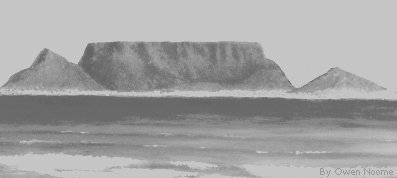




Introduction
South Africa is to a large extend Eurocentric, known as the First World. Its infrastructure, first world economy, modern facilities, roads, highways, cities, towns, etc compare favourably with that found in any Western European country and the USA. Early settlers from Western Europe laid the foundations of this First World component.
The Portuguese were the first Europeans to reach the Cape of Good Hope, arriving in 1488. However, settlement did not begin until 1652 when the Dutch East India Company established a refreshment station on the shores of Table Bay. The establishment of these settlements would have far-reaching effects on the South African region.
The directors of the company were known as the Heren XVII (The Lords Seventeen) and they chose Jan van Riebeeck as the first commander because he had spent almost a year in Table Bay after a shipwreck and knew the conditions of the place. Van Riebeeck remained at the Cape until 1662, when he was succeeded as commander by Zacharias Wagenaer. Later the rank of the man in charge at the Cape was raised to governor.
In 1657 the company released some of its employees from its service and set them up as independent farmers and free burghers; they could sell the produce of their farms to the company at fixed prices. By 1679 the free burghers, who were of Dutch and German stock, had settled at Stellenbosch. They reached Drakenstein a decade later, and then their numbers were augmented by the French Huguenots. By 1700 the settlement had reached the Tulbach district, but what was known as the Land of the Waveren was not open to settlement, ownership remaining vested and strictly vested, in the company, for here were its most important cattle posts.
These early settlers were the nucleus of what was to become the white population of South Africa. From 1717 onwards the free burghers, especially the pastoralists among them, began to move inland, and by the of the century there were farmers and settlements stretching from the neighbourhood of the Orange River in the north to the Great Fish River in the east. Areas occupied included the Kango, Outeniqualand, Langkloof, Tsitsikama, Camdeboo (Graaff- Reinet), Zwarteruggens, Bruintjes Hoogte, Zwagershoek and the Zuurveld, while the population of white men, women, and children was about 11 000. The first frontier war began in 1779, signalling the confrontation between the white settlers and the Xhosa-speaking tribes in the east.
In September 1795 the British captured the Cape of Good Hope ending about a century and a half of the company's rule.
When the French overran the Netherlands in 1795 the House of Orange asked Britain to occupy the Cape in order to keep the French out.
From 1795 to 1806 the Cape changed hands three times: the British captured it in 1795; the British handed it over to the Batavian Republic in 1803; then the British took it from the Batavian Republic in the first days of 1806 after the battle of Blaauwberg. In 1814 the Dutch ceded to Britain what had in fact been a British possession since 1806.

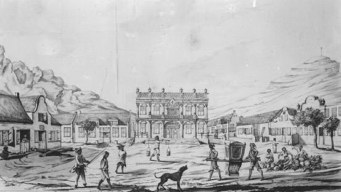
They came and they built - the Dutch, the French, the English, the Germans, the Afrikaners,...) contributed enourmously to the development of the South African region and the opening up of its interior and the coming of Western civilization to this part of the world. Today we witness the evidences of these wonderful achievements on African soil.
They improved agriculture, created industries, established economic and social systems, established banks (the first bank was the Lombard Bank in Cape Town, 1793), started businesses, established church denominations (Dutch Reformed, Anglican, Methodist, Presbyterian,...), erected churches in most towns, conducted Christian Missions,.....
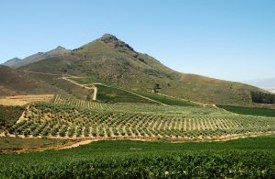
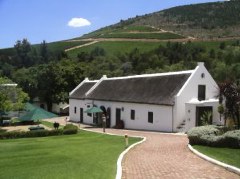
They built bridges roads and open the passes
Sir Lowry Cole (1772 - 1842) realized the importance of decent roads and passes. Under the design and ability of men such as John Montagu, Andrew Geddes Bain and Bain's son Thomas the construction of bridges, making of passes and building of roads were undertaken - Bain's built van Ryneveld Pass in 1832, Michell's Pass, Bain's Kloof or Pass as well as the Queen's Road between Grahamstown and Fort Beaufort. Montagu created an excellent network of roads and passes. Thomas built the road from George to Knysna as well as the Tzitzikamma road and passes: Grey, Tulbach, Kloof, Prince Alfred, Robinson, Tradouw, Garcia, Cogman's Kloof, Swartberg and Seven Weeks Poort.
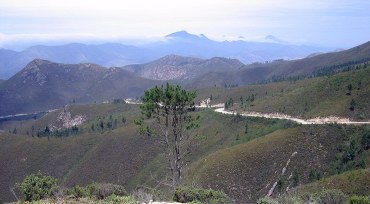
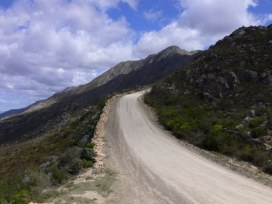
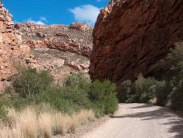
Seweweekspoort ( Seven Weeks Poort)
It's possibly one of the most magnificent and spectacular of all the mountain ravines in South Africa. The Seweweekspoort is one of three major gateways linking the Central Karoo with the Little Karoo in the Cape Province. It winds for 17km through the mountains at a level of 600-1000m above sea-level. The scenic gravel road that meanders through Seweweekspoort is known as the Smugglers Route. This was the way brandy smugglers travelled. The area itself with it's vast plains and blue mountains once sheltered runaway slaves, smugglers and outlaws.
They established education
Prior to 1838 education in Cape Town was in a poor state as it was in most of the colony. The first school was opened in the time of Jan van Riebeeck in 1658, and was followed by a number of others run in conjunction with the Dutch Reformed Church. After the coming of the British similar schools were opened by English churches. James Rose Innes (1799 - 1873), a Scot, became the first superintendent-general of education in the Cape Colony. A government education department was also established. The South African College (the present University of Cape Town) was founded in 1829. By the 1840's the Cape Colony was operating a system of centrally controlled Public Schools. Under this system, Stellenbosch was recognized as a divisional centre for education. In 1866 under the new Education Act the local Public School was reorganized as a First Class Public School, also to be known as the Stellenbosch Gymnasium. The latter set up by the Dutch Reformed Church became the Stellenbosch College in 1881 and in 1887 was renamed Victoria College of Stellenbosch. In 1918 it became the University of Stellenbosch. The St. Andrew's College in Grahamstown was founded in 1855.
They established libraries
It can be tentatively assumed that the original building of the Graaff-Reinet library is today the oldest library building in South Africa which still serves as a library. The library dates from the early 1830's. In 1830 there were approx. 800 volumes with 51 subscribers. On the 4th of August 1847, the central section of the present library building, as well as quarters for the librarian, built on an adjacent plot were erected at a cost of 1200 Pounds. In 1853 the government donated this ground, and by 1854 all debt had been paid off. Proof of the progress and development of the public library is expressed in an article written in 1870, by the correspondent "Fairplay". He concidered that the Graaf-Reinet library is one of the noblest institutions in our colony. Inferior only to the Cape Town library in the number of its books, not in the selection, and certainly superior to all other Colonial libraries in South Africa.
In 1818 Lord Charles Somerset founded the South African Public Library and it is still in existence.
More libraries started in other colonial towns; Grahamstown, Port Elizabeth, Kimberley, etc. Libraries were also started in the Orange Free State and the Transvaal.
They introduced science and technology
Astronomy led to the British establishing an observatory at the Cape. Zoologists, botanists and geologists studied the animals, plants and the land of the region. Technological developments centred mainly around the mining industry.